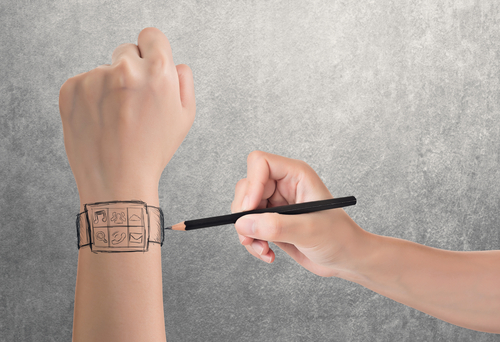While wearable technology’s exploding popularity is a recent phenomenon, the science behind is not. From its inception by Edward Thorp in the 1960s, the wearable computer came into existence as a device for cheating at the game of roulette. Today, beyond casino tables, wearables computers are the wizards of tiny technology.
On a worldwide level, the optimism surrounding wearables translates into dollars and cents – the market is expected to reach $20.6 billion by 2018, while global shipments of such devices are expected to peak at over 19 million units and rise to 485 million units sold by 2018, according to ABI research.
Considering some of the initial growing pains for wearables, such as consumers losing interest after the newness of their devices wear off, and whether all the data these devices provide can actually help users improve their health and well-being, the key question is will these issues erode or whether are wearables just hype?
To answer this, we need to look beyond the “cool gizmo” perspective of wearables from just a consumer point of view, and examine whether wearables have a place in the enterprise.
Health and fitness
Healthcare and fitness industries will drive the sales volumes for wearables in the next couple of years. According to ABI research, sales of wearable wireless medical devices will reach more than 100 million annually by 2016, and wearable sports and fitness-related monitoring devices will reach 80 million.
While growth is unlikely to slow down soon, the popularity of certain kinds of instruments over others should help weed out the fads from the tools that users will leverage over the long-term. Ear-based wearables historically are not as popular as eye or wrist-based devices. However, ear-based devices have an edge over the others, primarily because the blood vessels in the ears allow more accurate biometric measurements. As far as doctors or surgeons are concerned, ear-based wearables like glucose meters, temperature monitors and even sleep detectors give more accurate data.
Meanwhile in the fitness sector the reign of wrist-based wearables is expected to continue with the advent Apple Watch, multiple brands of sports watches, fitness bands and other tracker devices.
But what about the enterprise? Some industries are already incorporating wearable technology into how they interact with customers and improve business processes.
Retail
Retailers know they are servicing a new kind of shopper that is seeking consistent and fluid interaction at every touch point where information is available from online, in store and, of course, with wearables.
Using wearables, retailers can track price comparisons, ratings, reviews, costs, payment processing or deal offerings. Leading brands like Kenneth Cole have introduced a Google Glass app for advertising, PayPal is developing a payments app for Samsung Gear, and Barneys in collaboration with Intel. This type of accessibility to key interactions with customers should help improve customer service and satisfaction levels. Larger retailers like Walmart, Home Depot and Tesco, while not as far along, are warming up to the concept by researching and developing solutions for wearables in-house.
While these investments and proof-of-concept are ongoing, maturity will take more time to peak. Privacy –- especially with regard to wearables with built-in cameras – stand in the way of speeding up wider acceptance.
Banking
There are many applications for wearables in banking, including balance inquiries, alerts and real-time receipts, payments, following stock markets on the go, and browsing latest insurance offers and loan options.
Banks are one of the richest warehouses of consumer data, but, aside from companies like Spain’s Banco Sabadell building a Google Glass proof of concept or CaixaBank’s application for smart watches to follow stock markets, the industry’s complexity hinders the collective wearable movement from taking full bloom.
Travel and transport
The days of instructional video training are now trumped by the convenience of wearables, and travel is poised for transformation using wearables in the next five years. From 30,000 feet up, Virgin Atlantic, Iberia and Japan Airlines are conducting trials related to on-the-ground traveler comfort, boarding and departure experience using wearables. Spring Airlines provided flight attendants with Google Glass to evaluate how it can help improve customer service and Garmin D2 launched a GPS watch designed specifically for aviators to load flight plan information.
The verdict
The four industries described just scratch the surface. Insurance providers can use wearables for life-threat evaluations while also addressing concerns in security and privacy or new payments capabilities. In manufacturing, these devices can extend safety measures by notifying workers of toxic substances present on the shop floor or increase agility by alerting workers of a faulty wire on a production line. One reigning example is a hands-free Vuzix’s M100 smartphone that instructs workers where to find a product in the inventory.
As industries continue to experiment, success for wearables developers requires demonstrating how their products fit into the enterprise, establish where they improve upon existing technology, and demonstrate long term utility. This is most attainable when wearable companies focus on creating the complete SMAC-enabled ecosystem around the product, rather than building discrete devices.
>See also: How the way businesses interact with customers will change in 2015
Another important consideration for mass adoption is price. Individual wearable units cost from $150 to $1500. This is not sustainable. Based on the PC and phone industries going through a similar phase, we can assume it is only a matter of time before wearable prices drop. The fact remains that for wearables to become mainstream, they have to go from high-priced to affordable.
Given the different rates of adoption in numerous industries, the evolution of industry-specific solutions is more likely than a one-solution-fits-all scenario, which is good news for those planning to invest in this segment.
The hype around wearables may be justified, providing developers give industries compelling business reasons to create more workplace connections and focus on getting in front of cost, and privacy and security in each respective industry.
Sourced from Shivaprasad Chennoju and Umesh Neelakantan, Mindtree










